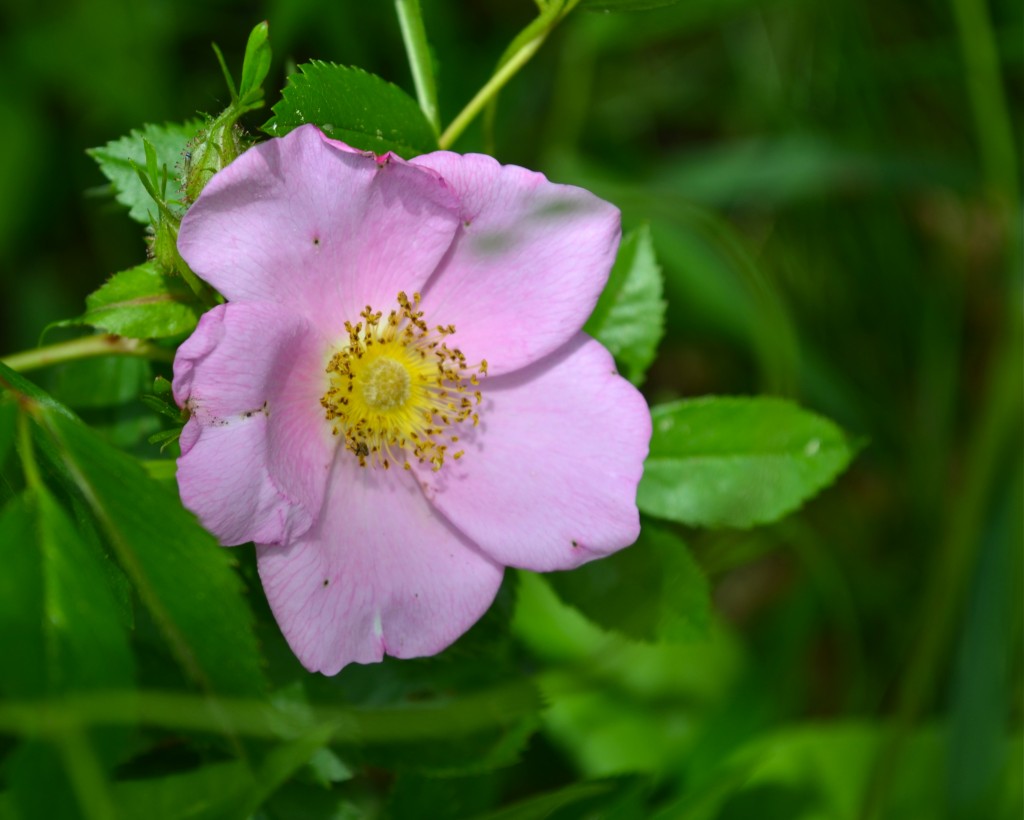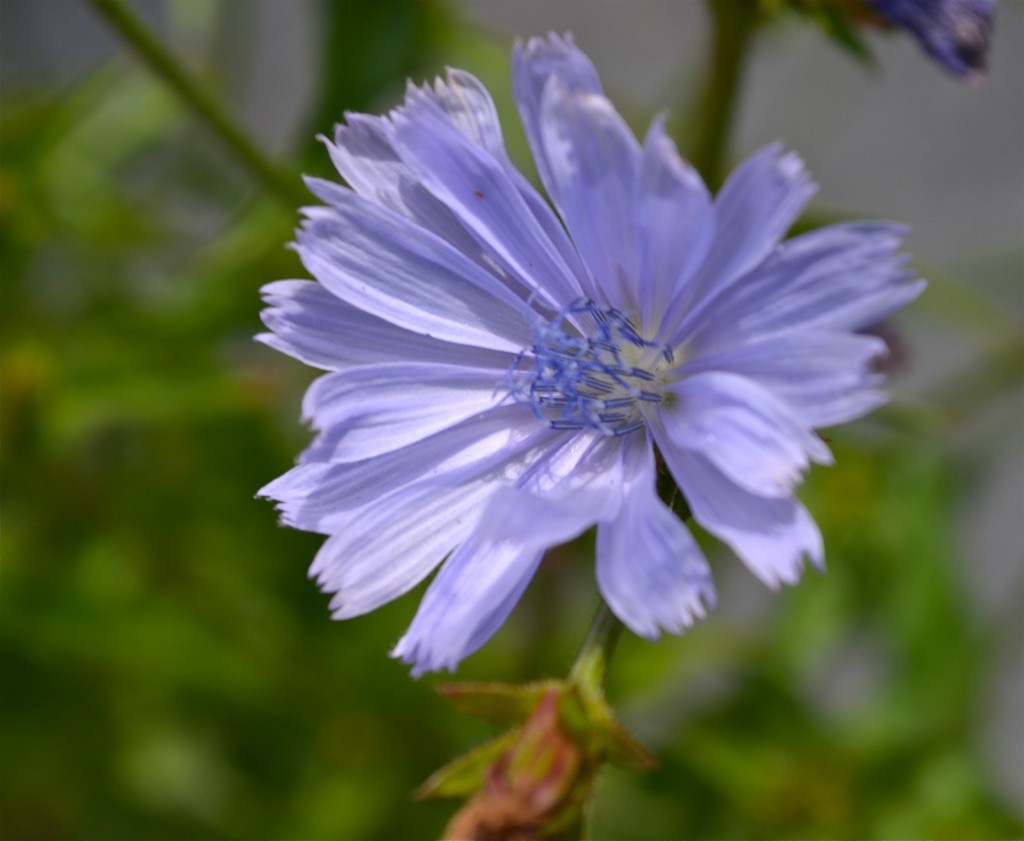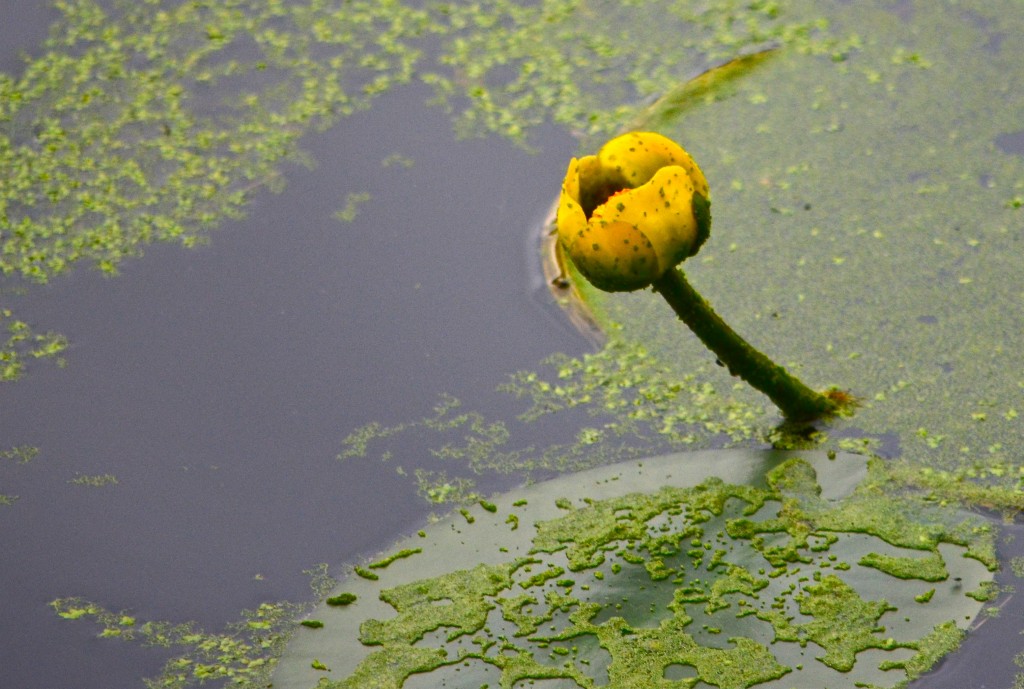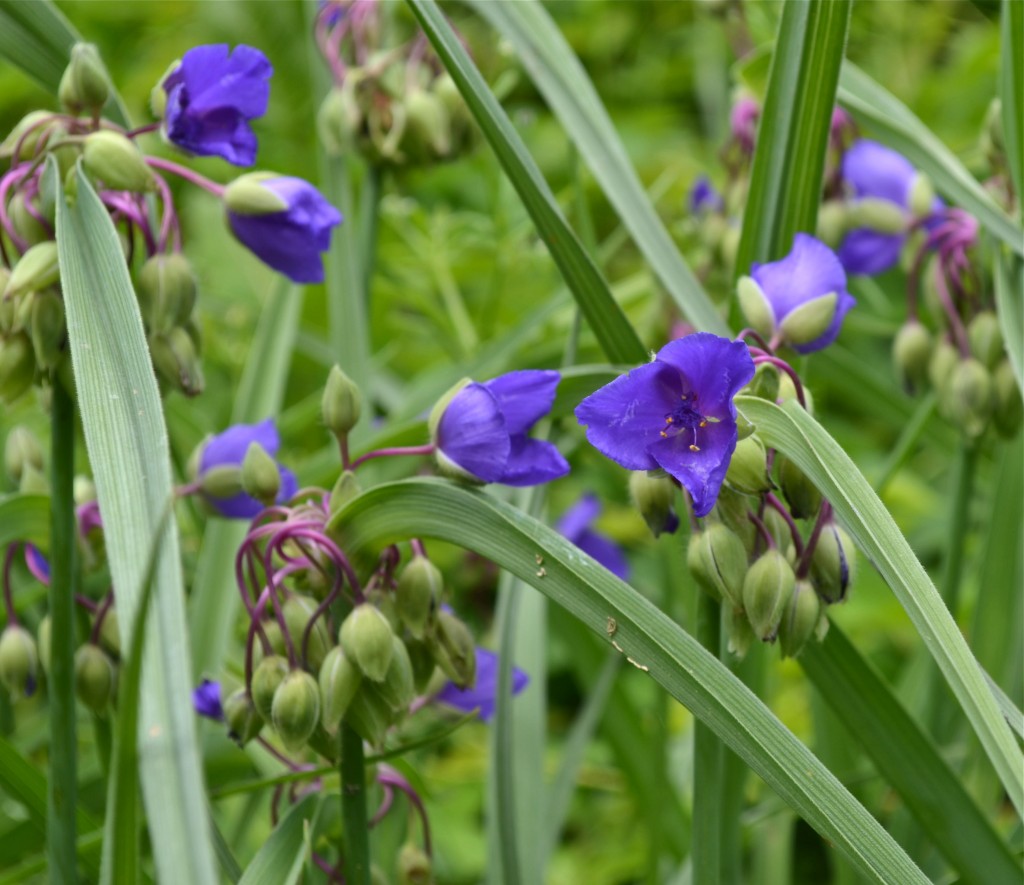 A lovely rose growing in moist soil on the lakeshore. Extremely fragrant. Native to the eastern U.S. While I took this, Lucy scouted out a big turtle.
A lovely rose growing in moist soil on the lakeshore. Extremely fragrant. Native to the eastern U.S. While I took this, Lucy scouted out a big turtle.
Swamp Rose (Rosa palustris Marsh)

 This must have a short blooming season, because I noticed a large area blooming in front of a long-empty house, and a couple of days later when I came back with a camera, there were very few blooms left. Many parts are edible, but the interesting thing is that you can roast and grind the roots, and brew them as a coffee substitute or additive. Has a smooth taste, no caffeine, and is still included in New Orleans-style blends. Also known to be toxic to internal parasites — now THAT’s coffee. Also, the chicory plant is one of the earliest plants mentioned in literature, and was cultivated in ancient Egypt. Native to Europe.
This must have a short blooming season, because I noticed a large area blooming in front of a long-empty house, and a couple of days later when I came back with a camera, there were very few blooms left. Many parts are edible, but the interesting thing is that you can roast and grind the roots, and brew them as a coffee substitute or additive. Has a smooth taste, no caffeine, and is still included in New Orleans-style blends. Also known to be toxic to internal parasites — now THAT’s coffee. Also, the chicory plant is one of the earliest plants mentioned in literature, and was cultivated in ancient Egypt. Native to Europe.
This is a small ground creeper. The species name repens refers to its trailing habit. Will bear red berries. The blossoms occur in pairs, and both must be pollinated to result in a single berry. Evidently people grow this in their gardens for the green leaves and red berries in winter. Native vine.
Partridge Berry (Mitchella repens)
A food plant for many insects. Sometimes cultivated for cut flowers, and longlasting in a vase! A tea made from the leaves was used as a laxative and to treat skin diseases. Has diuretic and fever-reducing properties. This plant was common in an area where I played as a kid and I remember how you could open its little dragon jaws. A species of toadflax native to Europe and Asia, and now common in North America.
Butter-and-eggs, Common Toadflax, Yellow Toadflax (Linaria vulgaris)
 A rooted plant with floating leaves. In early spring the leaves are light green and below the surface, but by late spring they float on the water, and in summer, they often stand above the water. They have long horizontal roots in the lake’s sediments. The roots can be up to 6 inches in diameter and several feet long. The flower gives off a strong brandy-like odor that attracts insects.
A rooted plant with floating leaves. In early spring the leaves are light green and below the surface, but by late spring they float on the water, and in summer, they often stand above the water. They have long horizontal roots in the lake’s sediments. The roots can be up to 6 inches in diameter and several feet long. The flower gives off a strong brandy-like odor that attracts insects.
Many cultures ate the roots cooked or dried and ground into flour for baking. The seeds were ground or popped like popcorn. The leaves and roots were used for dyeing and tanning. Leaves used to stop bleeding! and the roots as a pain remedy. Seeds are eaten by birds, and muskrats and beaver eat the roots. Native.
Yellow Pond Lily, Spatterdock, Cow Lily, Bullhead Lily (Nuphar lutea)
Bonus picture: other denizens of the pond.
 Each flower lives only one day, but each plant produces 20 or more flowers per stem. The sap has a viscous quality and can be stretched between your fingers like a thread of spider silk. Maybe this is where the name came from. Plus it’s also called Cow Slobber and I guess that could be related. The stems, leaves and flowers are edible, raw or added to stew. The flowers can garnish your salad! The spiderwort genus is named after John Tradescant, who was a gardener for King Charles I of England (1600-1649). Spiderwort seeds were brought back from the new world, and he planted them and popularized spiderworts. Love the curly purple stems.
Each flower lives only one day, but each plant produces 20 or more flowers per stem. The sap has a viscous quality and can be stretched between your fingers like a thread of spider silk. Maybe this is where the name came from. Plus it’s also called Cow Slobber and I guess that could be related. The stems, leaves and flowers are edible, raw or added to stew. The flowers can garnish your salad! The spiderwort genus is named after John Tradescant, who was a gardener for King Charles I of England (1600-1649). Spiderwort seeds were brought back from the new world, and he planted them and popularized spiderworts. Love the curly purple stems.
Spiderwort, Cow Slobber (Tradescantia sp.)